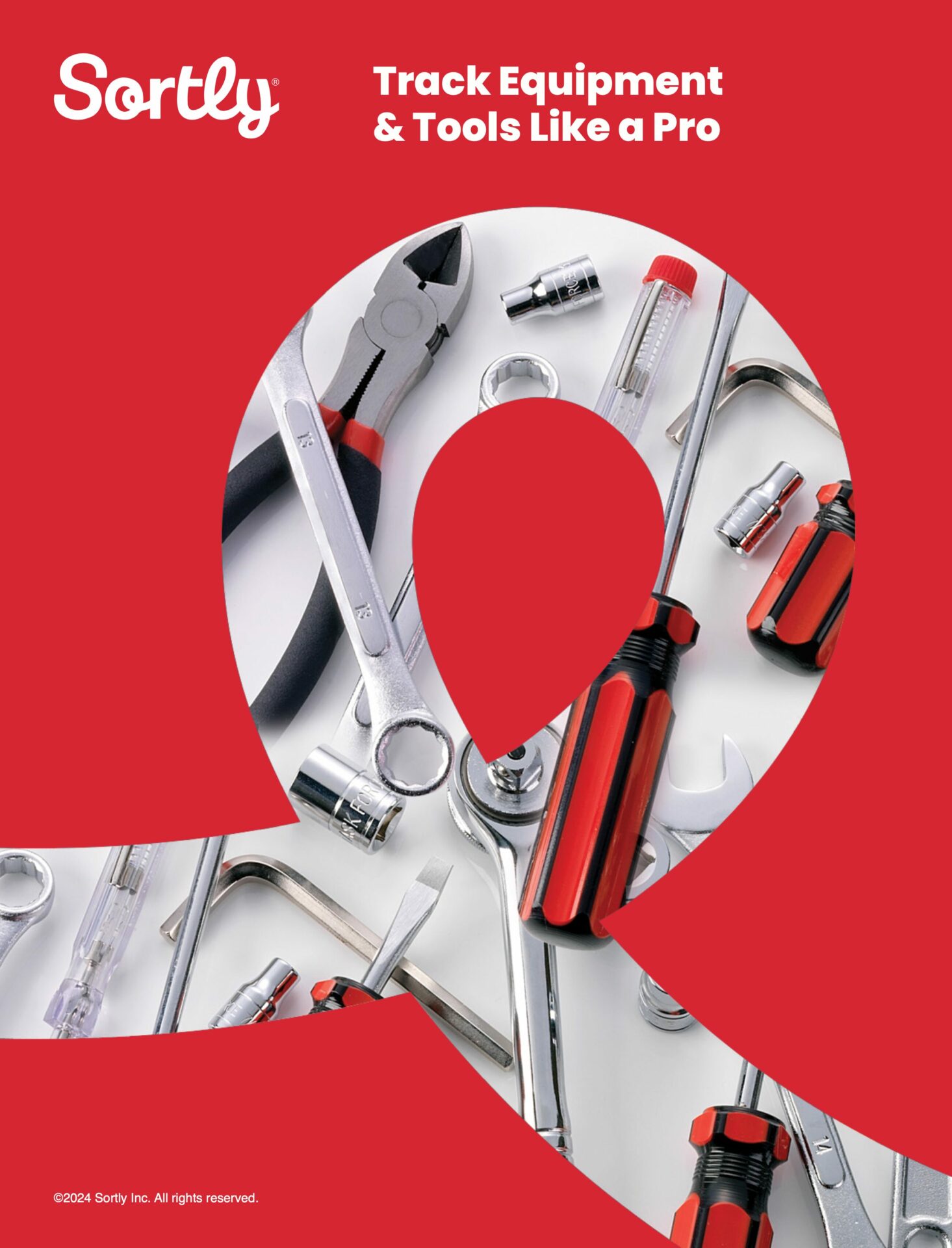Construction asset management (CAM) is all about keeping track of the tools, equipment, and machinery your team relies on every day. When done right, construction asset management helps prevent delays and reduce losses, while empowering your business to make smarter decisions about what assets to buy, where to store or send them, and when to maintain or replace them.
This guide walks through the full lifecycle of CAM, touching on common challenges, best practices, and practical strategies for contractors and construction stakeholders of all sizes. You’ll also see how asset management software like Sortly makes it easier to manage assets across job sites with real-time visibility and streamlined workflows.
What is construction asset management?
Construction asset management refers to the structured tracking and oversight of physical assets like tools, vehicles, and machinery used in construction projects. CAM includes monitoring assets’ location, condition, usage, and value throughout their lifecycle to reduce waste, improve productivity, and support better maintenance planning and resource allocation.
What is construction asset management?
The stages of the construction asset management lifecycle
Managing assets isn’t just about knowing what equipment, tools, and machinery you have on hand and where. It’s about understanding how each asset moves through its lifecycle and contributes to your bottom line. Here’s a breakdown of the key stages:
- Acquisition: Buying (or renting) construction equipment based on project needs and budget.
- Deployment: Assigning assets to construction sites and teams, often using barcode or QR code tagging.
- Usage tracking: Monitoring hours, mileage, or asset conditions to assess performance and wear.
- Maintenance: Performing routine inspections and repairs to extend lifespan and avoid breakdowns.
- Retirement or replacement: Removing or replacing assets based on usage thresholds, depreciation, or cost-benefit analysis.
Each stage benefits from centralized asset information and real-time data, especially when managing equipment across multiple job sites. This is made easier with digital software, although companies can track this information manually too.
This easy, comprehensive guide can help you:
Free Ebook: Track Equipment & Tools Like a Pro
Why is construction asset management so important?
Construction businesses rely on high-value equipment and machinery to get projects done. Whether you’re laying concrete, installing HVAC systems, or wiring a data center, delays caused by missing or broken equipment can derail timelines and budgets.
Good asset tracking (and an efficient construction inventory management system) helps:
- Prevent tool loss and theft
- Reduce downtime and improve operational efficiency
- Support safety standards and compliance
- Optimize allocation of resources across crews and locations
For construction companies managing multiple projects, having a cloud-based asset management system is even more important, and can keep operations running smoothly, even when day-to-day logistics are extremely complicated.
Common challenges of managing construction assets
Even the best-run construction companies face hurdles when it comes to tracking and maintaining assets. Here are a few common frustrations:
- Lack of visibility: Teams often don’t know where assets are or who’s using them.
- Manual tracking: Spreadsheets and paper logs are error-prone and hard to scale.
- Unplanned downtime: Missed maintenance schedules lead to costly breakdowns and delays.
- Over-purchasing: Without usage data, companies may buy more than they need.
- Lost warranties and records: Scattered documentation makes it hard to manage repairs or audits.
These issues tend to grow as construction companies expand, providing all the more reason for stakeholders to get (and stay) organized as they scale. While it’s never too late to adopt a good construction asset management strategy, the best time is always now.
How asset management differs by company size and asset type
Not every construction business needs the same level of oversight. In fact, strategies can and should shift depending on your business size, how many locations or projects you have on your schedule, and the types of assets you manage.
Managing equipment for small local contractors
Smaller teams often rely on reactive maintenance and basic tagging systems. A simple mobile app with barcode scanning and folder-based organization may be enough to track tools (and materials, too) across a few job sites. Regular condition checks and usage logs help prevent breakdowns without overcomplicating the process.
Sortly supports this approach with customizable folders, real-time alerts, and easy-to-use equipment tracking features, which is ideal for lean teams that need visibility without extra overhead.
Managing fleets across multi-site projects
Larger operations need proactive, condition-based assessments and standardized tagging across locations. Digital asset dashboards, found in asset management software, help track asset utilization, maintenance history, and asset location in real time. This ensures accountability, supports audits, and helps ensure thoughtful, strategic resource-sharing for expensive construction equipment.
Sortly’s reporting tools and location-based folders make it easy to manage fleets across regions. QR codes and alerts help teams stay ahead of issues before they impact workflows or project management timelines.
How to maximize ROI through strategic asset lifecycle management
Getting the most out of your assets means thinking beyond day-to-day tracking. Here are three ways to improve ROI through smarter lifecycle management.
1. Define clear replacement thresholds for assets
Set thoughtful limits for part and equipment replacement, such as hours used, mileage, or condition rating, to avoid costly over- or under-maintenance. Sortly’s maintenance alerts can notify teams of upcoming scheduled service as well, helping you prevent breakdowns from occurring.
This kind of preventive maintenance helps extend asset lifespan and reduce downtime across construction sites.
2. Keep the right amount of equipment on hand
Instead of purchasing more equipment, look at how your current assets are being used. Analyze job-site utilization, and see if on-demand rentals might be a better bet for “busy” times. Sortly helps you optimize usage and avoid downtime by showing where assets are and helping you better plan how to allocate them.
3. Centralize asset health data for better decisions
When inspection, usage, and repair records live in one place, transparency increases, and it’s easier to spot high-cost assets or equipment in poor condition and prioritize what’s purchased next.
Sortly makes this easy by allowing you to attach warranties, maintenance records, and set date-based alerts, so you can make smarter decisions about replacements and upgrades with information all in one place.
Manage your construction assets more effectively with Sortly
Whether you’re managing a few tools or a fleet of heavy machinery, Sortly helps you track assets in real time, reduce losses, and make smarter decisions. With features like barcode scanning, location-based folders, and detailed reporting, Sortly simplifies construction asset management for teams of any size.
If you’re ready to automate asset tracking and streamline your workflows, Sortly’s construction asset management software is built to scale with your business.
Start your two-week free trial of Sortly today.




